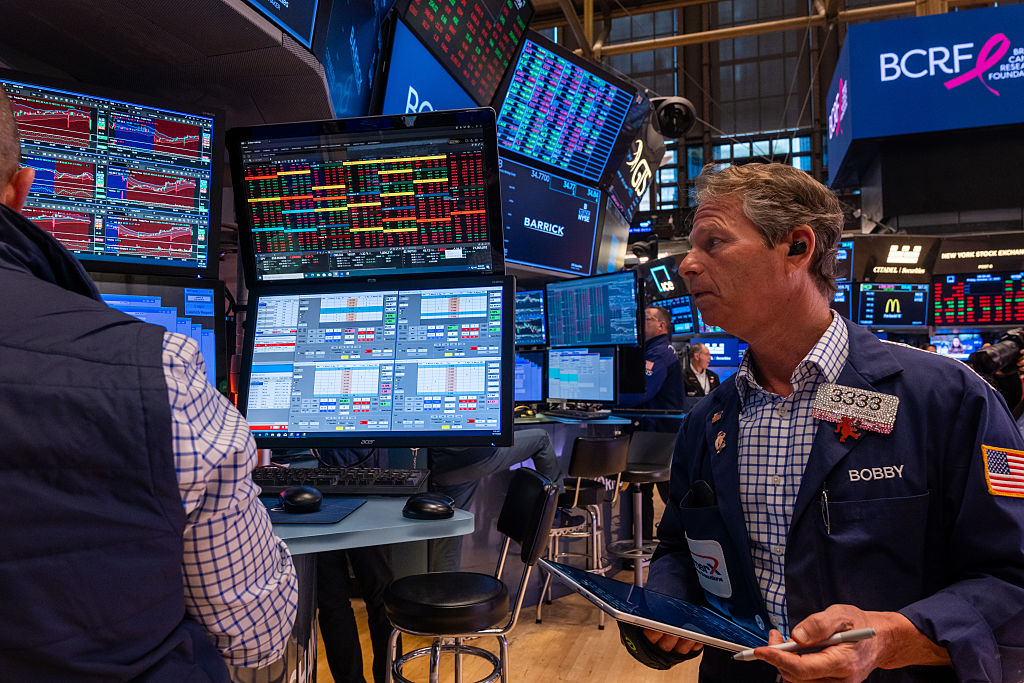More clouds gather over renewable energy trusts – is there any hope for the sector?
The outlook for renewable energy trusts has gone from bad to worse this year, with the industry being caught in a 'perfect storm'


Renewable energy trusts were already struggling before the government decided to kneecap them at the end of October. In a major shock, it has launched a consultation on changing the inflation linkage on the subsidies they receive from the retail price index (RPI) to the consumer price index (CPI) in April 2026, three years sooner than expected.
Even worse, the government has floated a second, complex option that would backdate the switch to 2002. This may have been thrown in mainly to make a April 2026 change sound like a concession, but if actually implemented could reduce the income received by generators by billions of pounds over the coming years. The market reacted accordingly and the sector as a whole lost about 5% of its market value on the day.
Why is the renewable energy trusts industry struggling?
The proposals have created yet another cloud of uncertainty over a sector that was already unloved by investors. The industry has been caught in a “perfect storm” and is ill-equipped to deal with its current challenges, says Pietro Nicholls of RM Funds, an activist that has been battling battery-storage fund Gore Street Energy Storage Fund (LSE: GSF). Many of the trusts’ boards lack the experience required to address these problems, he argues. So instead, they’ve turned to easy ideas such as share buybacks.
MoneyWeek
Subscribe to MoneyWeek today and get your first six magazine issues absolutely FREE

Sign up to Money Morning
Don't miss the latest investment and personal finances news, market analysis, plus money-saving tips with our free twice-daily newsletter
Don't miss the latest investment and personal finances news, market analysis, plus money-saving tips with our free twice-daily newsletter
Part of the problem is uncertainty over reported net asset values (NAVs). “An infrastructure or renewable investment trust NAV calculation is generally based on a number of different asset-specific (eg, output, power prices or project cash flows) and macro (eg, inflation or foreign exchange rate) assumptions, with individual trusts using different inputs to calculate the NAV value,” says Ashley Thomas of broker Winterflood. For example, if Greencoat UK Wind (LSE: UKW) were to use the same power price assumptions as Renewables Infrastructure Group (LSE: TRIG), its NAV would be lower than currently reported, estimates Winterflood. Since these are just assumptions, it is hard to say which numbers are more appropriate, but with so many variables, NAVs are undoubtedly highly subjective and volatile. Across the sector over the past 18 months, NAV changes have ranged from +8% to -7%, says Winterflood.
Feuding with renewable energy trust managers
It is regrettable that many managers were paid fees based on a percentage of NAV rather than performance. This became increasingly controversial once shares traded far below NAV. In the past year, many trusts have belatedly shifted to levying fees on a 50/50 mix of NAV and market value (or in UKW’s case, entirely on market value). Dealings with managers are becoming a common point of contention. Take Aquila European Renewables (LSE: AERI), which has agreed to sell assets to another fund advised by Aquila at a large discount to the current NAV, says Nicholls. How can the same manager assign two different values to the same assets? Or take a plan by Bluefield Solar Income Fund (LSE: BSIF) to merge with its manager, saying this would make to easier to invest in new projects. The trust has instead put itself up for sale after a backlash. Or just this week, TRIG has said it will merge with HICL Infrastructure (LSE: HICL), run by the same manager.
These developments show a lack of concern for investors, says Nicholls, which is clouding the real value of the assets. “If boards were more respectful of shareholders, the share prices would be a lot higher.”
It isn’t clear what it will take to shift sentiment towards the sector. The government’s consultation certainly won’t help. Still, there needs to be a substantial change in the way these trusts are run, with a primary focus on the interests of shareholders. Only then can investors begin to trust NAVs are what managers say they are.
This article was first published in MoneyWeek's magazine. Enjoy exclusive early access to news, opinion and analysis from our team of financial experts with a MoneyWeek subscription.
Get the latest financial news, insights and expert analysis from our award-winning MoneyWeek team, to help you understand what really matters when it comes to your finances.

Rupert is the former deputy digital editor of MoneyWeek. He's an active investor and has always been fascinated by the world of business and investing. His style has been heavily influenced by US investors Warren Buffett and Philip Carret. He is always looking for high-quality growth opportunities trading at a reasonable price, preferring cash generative businesses with strong balance sheets over blue-sky growth stocks.
Rupert has written for many UK and international publications including the Motley Fool, Gurufocus and ValueWalk, aimed at a range of readers; from the first timers to experienced high-net-worth individuals. Rupert has also founded and managed several businesses, including the New York-based hedge fund newsletter, Hidden Value Stocks. He has written over 20 ebooks and appeared as an expert commentator on the BBC World Service.
-
 Christopher Harborne: Reform UK donor and crypto billionaire
Christopher Harborne: Reform UK donor and crypto billionaireChristopher Harborne came into the spotlight when it emerged he had given £9 million to Nigel Farage's Reform UK. How did he make his millions?
-
 Reeves's business rates hike will crush the British economy
Reeves's business rates hike will crush the British economyOpinion By piling more and more stealth taxes onto businesses, the government is repeating exactly the same mistake of its first Budget, says Matthew Lynn
-
 Who is Christopher Harborne, crypto billionaire and Reform UK’s new mega-donor?
Who is Christopher Harborne, crypto billionaire and Reform UK’s new mega-donor?Christopher Harborne came into the spotlight when it emerged he had given £9 million to Nigel Farage's Reform UK. How did he make his millions?
-
 Rachel Reeves's punishing rise in business rates will crush the British economy
Rachel Reeves's punishing rise in business rates will crush the British economyOpinion By piling more and more stealth taxes onto businesses, the government is repeating exactly the same mistake of its first Budget, says Matthew Lynn
-
 The best Christmas gifts for your loved ones
The best Christmas gifts for your loved onesWe round up the best Christmas gifts with a touch of luxury to delight, surprise and amaze family and friends this festive season
-
 Leading European companies offer long-term growth prospects
Leading European companies offer long-term growth prospectsOpinion Alexander Darwall, lead portfolio manager, European Opportunities Trust, picks three European companies where he'd put his money
-
 How to harness the power of dividends
How to harness the power of dividendsDividends went out of style in the pandemic. It’s great to see them back, says Rupert Hargreaves
-
 Why Trustpilot is a stock to watch for exposure to the e-commerce market
Why Trustpilot is a stock to watch for exposure to the e-commerce marketTrustpilot has built a defensible position in one of the most critical areas of the internet: the infrastructure of trust, says Jamie Ward
-
 Tetragon Financial: An exotic investment trust producing stellar returns
Tetragon Financial: An exotic investment trust producing stellar returnsTetragon Financial has performed very well, but it won't appeal to most investors – there are clear reasons for the huge discount, says Rupert Hargreaves
-
 How to capitalise on the pessimism around Britain's stock market
How to capitalise on the pessimism around Britain's stock marketOpinion There was little in the Budget to prop up Britain's stock market, but opportunities are hiding in plain sight. Investors should take advantage while they can